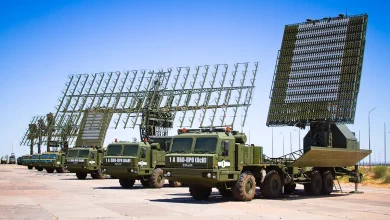US Navy successfully tests new SPY-6 shipboard radar

Raytheon, a leading defense technology provider, has reported positive feedback from the US Navy regarding the successful testing and continuous production of the AN/SPY-6 radar system.
Rear Adm. Seiko Okano, Program Executive Officer for Integrated Warfare Systems, characterized the performance of the SPY-6 radar as “fantastic” during recent major test events.
Okano told Defense News in a December interview these included the historic at-sea live-fire test in September and an air raid test event in December, both conducted aboard the Flight III Arleigh Burke-class destroyer Jack H. Lucas.
The AN/SPY-6 radar represents a significant advancement in air and missile defense capabilities, featuring integrated capabilities to defend against a spectrum of threats, including ballistic missiles, cruise missiles, hostile aircraft, and surface ships, all simultaneously. Notably, it offers substantial improvements over legacy radars, including a greater detection range, increased sensitivity, and enhanced discrimination accuracy.
Raytheon highlights the radar’s role as a replacement for a system utilized by the Navy for four decades. With 30 times the sensitivity of its predecessor, the AN/SPY-6 radar provides operators and commanders with extended reaction time by identifying threats, including hypersonic weapons, more rapidly and at greater distances.
The Navy’s acknowledgment of the radar’s fantastic performance underscores its crucial role in enhancing maritime defense capabilities. The successful integration of SPY-6 onto the Flight III Arleigh Burke-class destroyer marks a milestone in advancing naval technology.
This adaptability aligns with the evolving needs of the Navy, allowing for a flexible and efficient deployment strategy.
As the Navy continues to invest in cutting-edge technologies, the AN/SPY-6 radar system stands out as a critical component in the fleet’s evolving capabilities.
As noted by Raytheon, SPY-6 will be integrated onto nearly 50 Navy ships over the next 10 years. It’s the Navy’s first truly scalable radar, making it easy to configure to any type of ship.





